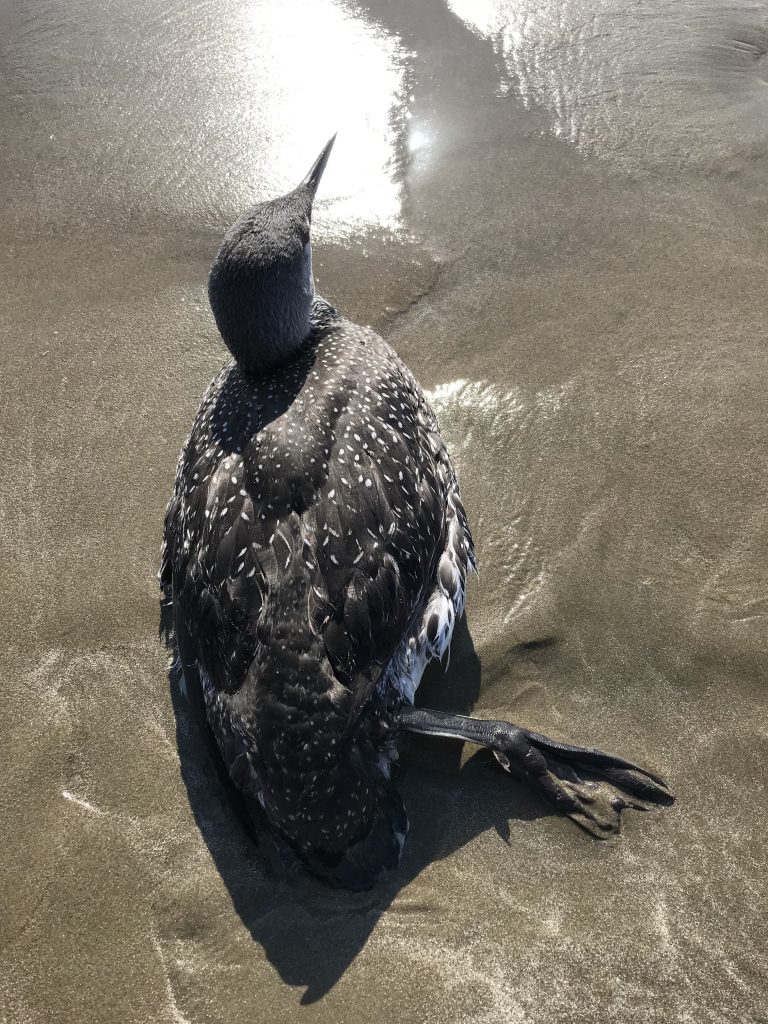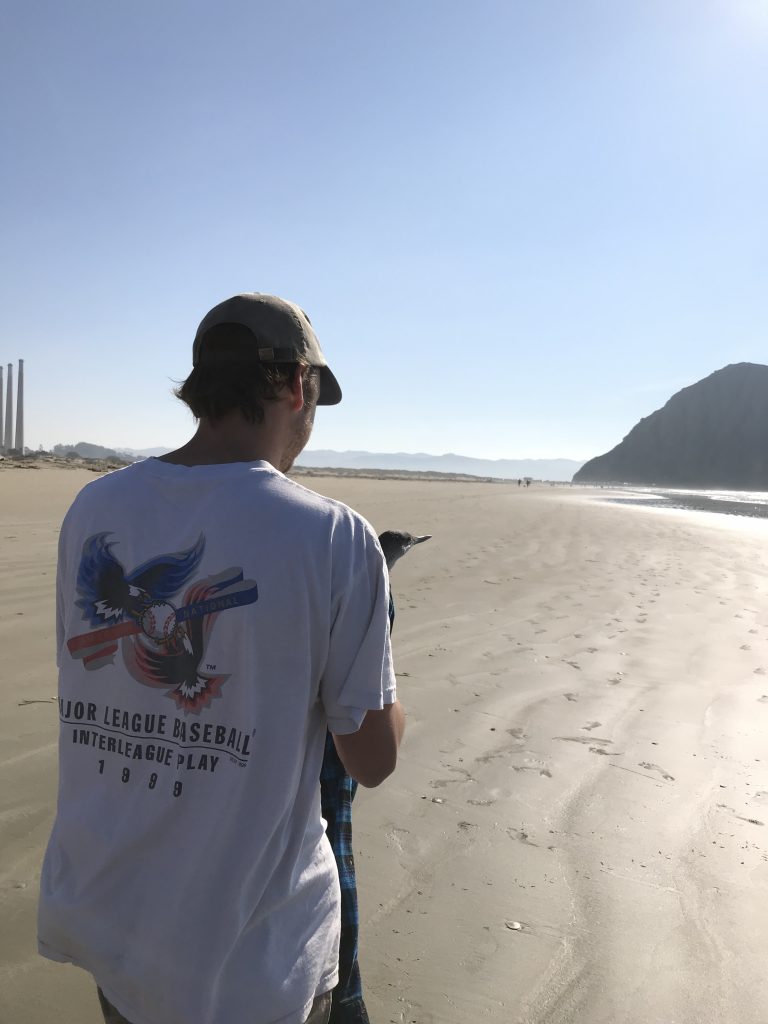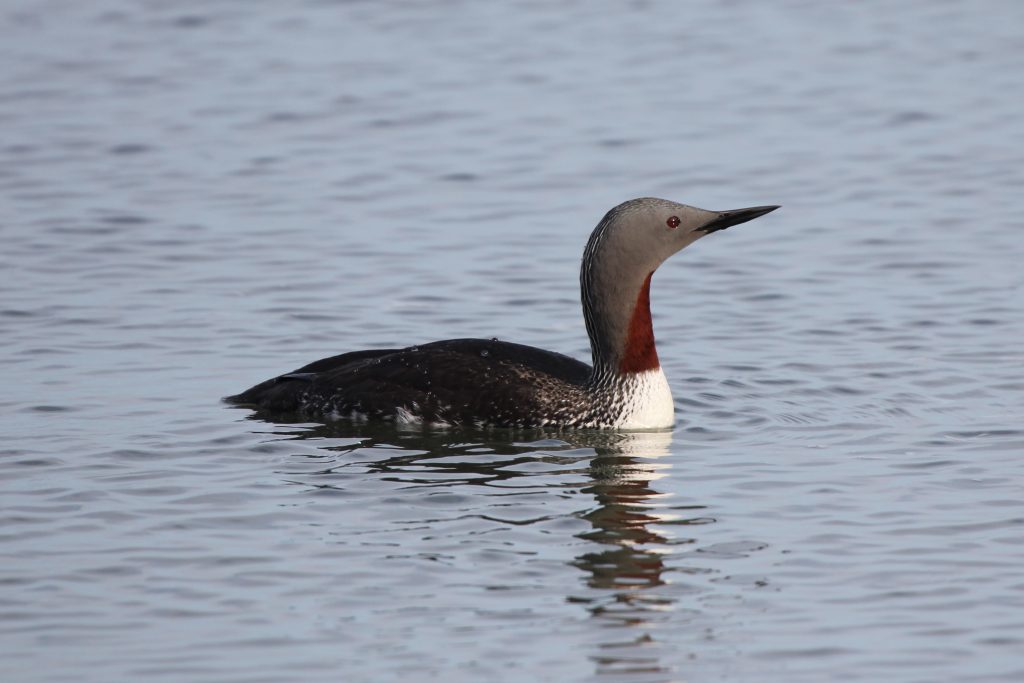Guest post by Charlotte Ross

Charlotte Ross is a third-year journalism student at Cal Poly. In addition to her major, she is working toward dual minors, one in Spanish and the other in Biology with a concentration in Wildlife and Biodiversity Conservation. Charlotte would like to pursue a career in travel and wildlife reporting so that she can surround herself in nature and see the beauty of the world while writing about it. Outside of work and school, she likes spending time at the beach, hiking, traveling, playing with her dog or chameleon, and watching the sunset in Morro Bay.
The Red-Throated Loon and Pacific Wildlife Care
While hiking through the hills or walking along the beach, it isn’t uncommon to stumble upon injured wildlife. The question of what to do in that moment can make people hesitant to intervene; luckily San Luis Obispo County has Pacific Wildlife Care to help. This nonprofit organization is dedicated to wildlife rehabilitation and educational outreach that teaches people what to do in these situations.
Just a couple of months ago, I had to make a call to the center in hopes of rescuing an injured bird. Two of my friends and I had been walking my dog along Morro Strand Beach; it was a clear sky and we didn’t have any real plans for the day yet. As we approached the shore, we saw a small bird lying in the wet sand with a trail of blood coming from underneath. My dog didn’t seem to notice or care about the bird and the bird didn’t seem to be startled by any of us.

I noticed the blood right away, but it wasn’t clear where the bird was bleeding from or what part of it was in pain. I dug some of the sand away from below where the blood was flowing and noticed that its leg was bent out of place. At that point, it was evident that the bird was suffering from the injury and wouldn’t survive there on its own.
Calling for help
A friend of mine, Liam, looked up who to contact for help and we made the call to Pacific Wildlife Care. Both of us spoke to a volunteer about the situation, explaining what we could see and where we and the bird were located along the beach. Because we were so far down the sand, the woman we spoke with decided to have us carry the bird to the parking lot near Morro Rock to meet her. She talked us through how to approach the injured bird and swaddle it with the flannel Liam was wearing. As we walked close to two miles down the beach, the bird quickly swayed its head in and out of the flannel.

Hardly any people seemed to react to the bird in Liam’s arms, besides one woman who asked if we had contacted Pacific Wildlife Care. My dog, too, seemed uninterested in what was happening, but I was fascinated by it all. It felt so rewarding to know that we were giving this injured animal a second shot at life, or at least a shorter suffering period. I watched my friend carry the bird, staying calm and gentle even when it moved agitatedly in his arms.
Eventually, we met up with two volunteers from the wildlife center who took the bird, which turned out to be a red-throated loon, from us and placed it in a proper box. They thanked us and told us they didn’t know if the loon would make it back into the wild, but that we could always call to be updated on its recovery.

Checking in on the loon
Only about a week or two after giving the loon to the wildlife center, I heard back about its condition. Dr. Riggs, the Director of Animal Care, said that the loon had an open fracture of one leg bone that was too severe to mend. Unfortunately, the injury was so extreme that the bird had to be euthanized.
Although this wasn’t the news I had hoped for, it was still good news, in a way. The amount of time the loon spent suffering was much shorter than it would have been if we had left it incapable of protecting itself on the beach. The experience of finding the bird and getting it to the center for help had also made me more aware of the wildlife resources offered in San Luis Obispo County.
How to help an injured animal that you find on the beach
It is never pleasant finding an animal in harm’s way, but knowing how simple it is to get help makes it much more bearable. Pacific Wildlife Care offers the following tips on how to improve the chance of recovery for injured wildlife.
- If you find an injured bird, land mammal, reptile, or amphibian, please call Pacific Wildlife Care at 805-543-9453 (WILD). Take the time to listen to the message. It’s lengthy because it gives detailed instructions about what to do to aid the animal in your care before a volunteer arrives. Leave your own message and keep your phone close. Someone will call you back. (If you find an injured sea lion, seal, or otter, call the Marine Mammal Center instead. Their number is 415-289-7325.)
- While you are waiting for a return call, get a towel, sheet, or sweatshirt and cover the animal’s head. This will help keep it calm while you transfer it. If you feel that you need protective gear, consider wearing gardening gloves while you do this. Do not handle any animal if you do not feel safe doing so.
- Place the animal gently into a cardboard box that allows it to breathe. Bring the animal to a quiet place away from dogs and kids. It is likely to be very stressed out and needs as little stimulation as possible. Handle it as little as possible.
- Remember that water birds can have surprisingly long necks. It’s best to keep their faces (and beaks) as far away from your face as possible.
- Do not feed the animal.
- Wait for more instructions when you receive a call back. The call may come from a volunteer’s personal cell phone number.
Don’t be afraid to make the call that can save an animal’s life or give it at least a chance at recovery. Visit Pacific Wildlife Care’s website to learn more about the organization and volunteering opportunities.
Help us protect and restore the Morro Bay estuary!
- Come see S.L.O.P.E.’s show Flowing Estuary to Living Sea, at the Morro Bay State Park Natural History Museum now through March 31, 2019. A portion of proceeds from art sales will benefit the Morro Bay National Estuary Program and the Central Coast State Parks Association. We hope to see you there! On Saturday, March 30, you can even meet the Plein Air painters in person at the closing reception. Just stop by between 1:00 and 4:00 p.m. to say hello!
Watch the video below for a preview of more artwork from the show.
- Donate to the Estuary Program today and support our work in the field, the lab, and beyond.
The Estuary Program is a 501(c)3 nonprofit. We depend on funding from grants and generous donors to continue our work. - Support us by purchasing estuary-themed gear from ESTERO. This locally owned and operated company donates 20% of proceeds from its Estuary clothing line and 100% of Estuary decal proceeds to the Estuary Program. Thank you, ESTERO!
- Purchase items from the the Estuary Program’s store on Zazzle. Zazzle prints and ships your items, and the Estuary Program receives 10% of the proceeds. Choose from mugs, hats, t-shirts, and even fanny packs (they’re back!) with our fun Estuary Octopus design, our classic Estuary Program logo, or our Mutts for the Bay logo.
Thank you for your support!